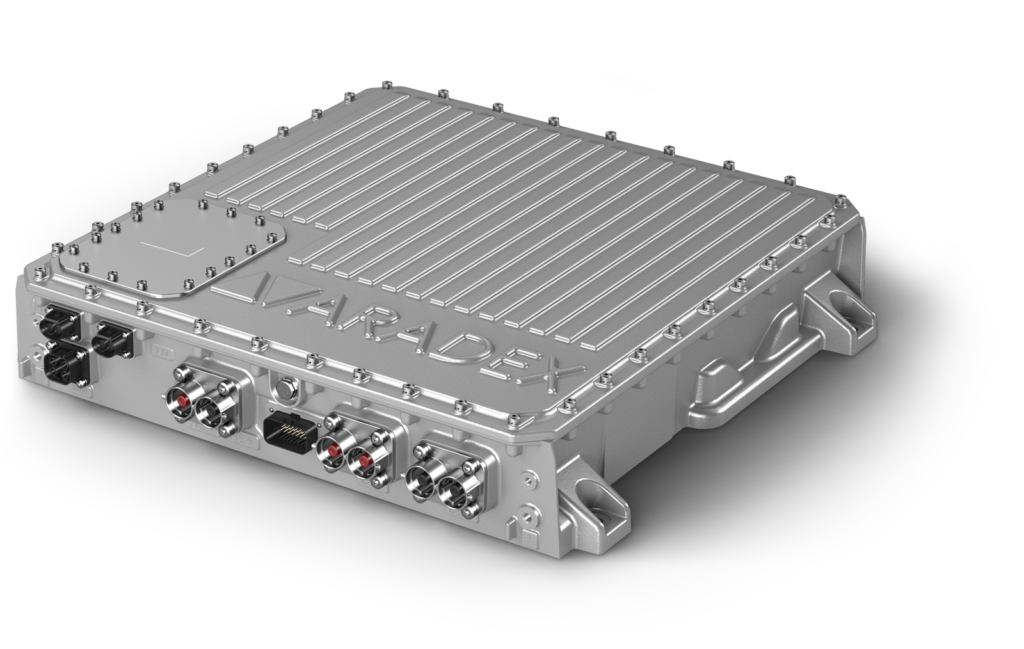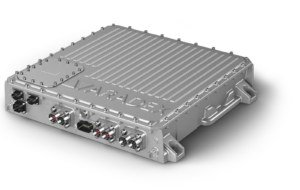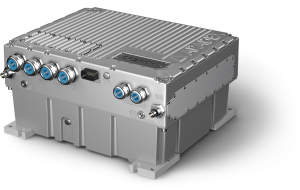Product has been added for comparison.
Voltage range:
Continous power:
VP5000 installed on Ballard Power Systems FCmoveTM-HD

The VP5000 high-voltage DC/DC converters couple two different DC voltages with high efficiency. Like the VP600 inverters, the VP5000 DC/DC converters have an integrated PLC for additional functionality and free programmability. The VP5000-DCDC60, DCDC200 and DCDC200-HL models operate bidirectionally. The VP5000-FCDC500 operates unidirectionally as a pure fuel cell DC/DC.
No external chokes etc. required, everything integrated.
Optimized for high efficiency in wide voltage and current range.
Parallel connection for higher power possible (requires additional technology module).
Unfortunately we could not find any results for your search. Please
try another search or contact us.


All necessary inductors and capacitors are integrated. The VP5000-DCDC200-HL and VP5000-FCDC500 models also have an integrated pre-charging circuit. Configurable and parameterizable software functions round off the complete solution.
The VP5000-DCDC200-HL model offers an integrated brake chopper as an additional function. The chopper resistor is connected to the outside of the device and can be rated up to 150kW.
All VP5000 DC/DC converters are characterized by a wide voltage range on the low voltage side meaning that a wide range of fuel cells can be connected.
The “interleaved” design and appropriate dimensioning guarantee small ripple currents.
All VP5000 DC/DC converters feature fast and sensitive control of voltage and current. For example, response to changes in operating conditions occur within a few milliseconds.
The VP5000-DCDC200, VP5000-DCDC200-HL VP5000-FCDC500 models in particular are especially suitable for coupling fuel cells to high-voltage systems over a wide voltage range.
The fast response time and wide voltage range make the bidirectional VP5000-DCDC60, VP5000-DCDC200 and VP5000-DCDC200-HL models ideal for coupling high-performance capacitors – so-called SuperCap (or UltraCap) as high-power energy storage devices to HV systems.
The bidirectional models VP5000-DCDC60, VP5000-DCDC200 and VP5000-DCDC-HL are ideally suited for efficient coupling of even very different batteries into one system due to their high efficiency levels.
You want to use batteries in the voltage range 250-450V for your 700-800V system? No problem with our bidirectional DC/DC VP5000-DCDC60, VP5000-DCDC200 and VP5000-DCDC200-HL.
The VP5000-DCDC200 and VP5000-DCDC200-HL models can also be used in special setups to implement high-performance charging systems.
From conceptual design and project planning to commissioning and after sales maintenance, we deliver the system components as well as powerful tools and customized functions to find the best solution for your application.